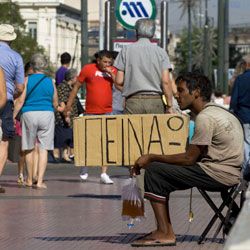What's black and white, but mostly red all over? The current global economy.
As the European Banking Authority struggles to support its indebted member nations and Wall Street searches for its fiscal sea legs in the wake of the global recession, many of the largest economies in the world face mounting debt. According to data compiled by The Economist, countries around the world collectively have run up a tab of $40 trillion -- and counting [source: Economist].
Advertisement
But how large is each country's slice in that massive debt pie? International exchange rates, inflation and spending can be as mercurial as local climates, after all. To figure out how much countries are in the hole comparatively, it's wise to start with what they bring in. For that, we look to gross domestic product, or GDP. A nation's GDP is the annual paycheck it brings home, equivalent to the total value of all the goods and services produced within its borders.
Things get muddier on the expenditure side of the ledger, since economists can slice and dice debt according to public debt, initiated by the government, or they can analyze external debt, which combines public and private (i.e. corporate) debt. Others also consider household debt, or the amount of debt residents rack up. Since the CIA and the International Monetary Fund (IMF) focus on gross public debt, also known as sovereign debt, which is calculated as a percentage of the GDP, this list will do the same as it ranks the following 10 nations in the red.










